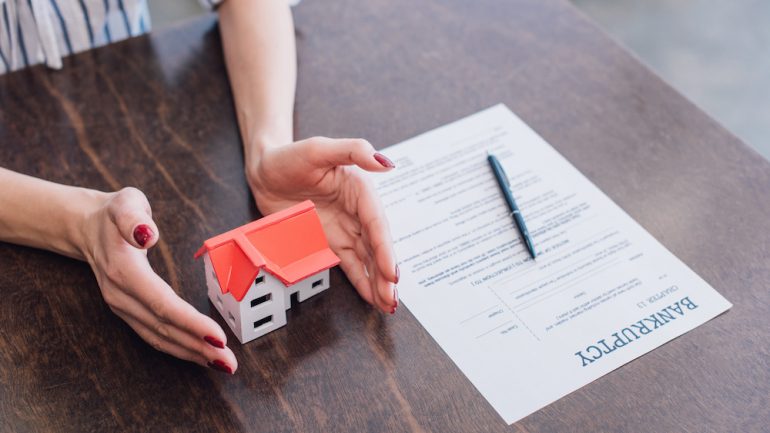Significant financial misfortune may lead you to do the unthinkable: file for bankruptcy. You may fear that this means the American dream of homeownership is out of reach, but all is not lost. Homeownership after bankruptcy is possible.
Types of bankruptcy
Federal law allows individuals to file two types of bankruptcy: chapter 7 and chapter 13.
Chapter 7 is for individuals who have no hope of paying off their debts. In Chapter 7, the bankruptcy court requires you to sell all your assets except those the law protects. The court pays your creditors with the proceeds. Once these means are exhausted, the court orders a discharge of your remaining debts. Chapter 7 bankruptcy stays on your credit report for 10 years.
Chapter 13 bankruptcy is for people who have regular income and want to settle their debts. The court oversees the consolidation and reorganization of your debt so that you can pay it back over three to five years. Chapter 13 bankruptcy stays on your credit report for seven years. If you stay on track with repaying debts after your discharge, Chapter 13 allows you to present a more positive picture for obtaining future credit such as a mortgage.
Once a bankruptcy court dismisses all or part of a debt obligation, a creditor by law cannot list it as still owed on your credit report.
Impact on mortgage applications
Bankruptcy makes obtaining a mortgage more difficult because it damages your credit history and credit score. Mortgage companies rely on both in determining the risk of loaning money to you.
Filing bankruptcy can knock as much as 200 points off your credit rating. The drop will be sharpest for those with a strong credit rating, say higher than 780. Those whose credit rating was already low will take a lesser hit because they have less to lose in points. If you’re interested in homeownership after bankruptcy, you’ll have to work to improve your credit rating.
Thus, those who dream of homeownership after bankruptcy must work hard to restore their credit. If you filed Chapter 13, you must diligently make your bankruptcy debt repayments on time and in full. You must do the same with any payment obligations you acquire after your bankruptcy. The latter is also true for those who filed Chapter 7 bankruptcy. Making timely payments on a secured credit card is an additional way to rebuild your credit.
Be diligent about monitoring your credit
You are entitled to one free credit report per year from the three credit reporting agencies: Equifax, Experian and Transunion. Study your report carefully to make sure all information is accurate. If a debt that the court discharged or you repaid is still showing up as unpaid, dispute that with the agency reporting it.
Be aware that it makes more sense financially to wait a bit after bankruptcy before buying a home. To obtain a mortgage within the first year of bankruptcy, you must make a 35 percent down payment and pay a significantly higher interest rate than someone with clear credit. Wait a year, and the mortgage company may require only 25 percent down. Two years later, a 20 percent down payment may be enough. These wait times and terms may be better if you filed chapter 13 and successfully completed your repayment plan.
Related – What To Do About a Mortgage Application Denial


